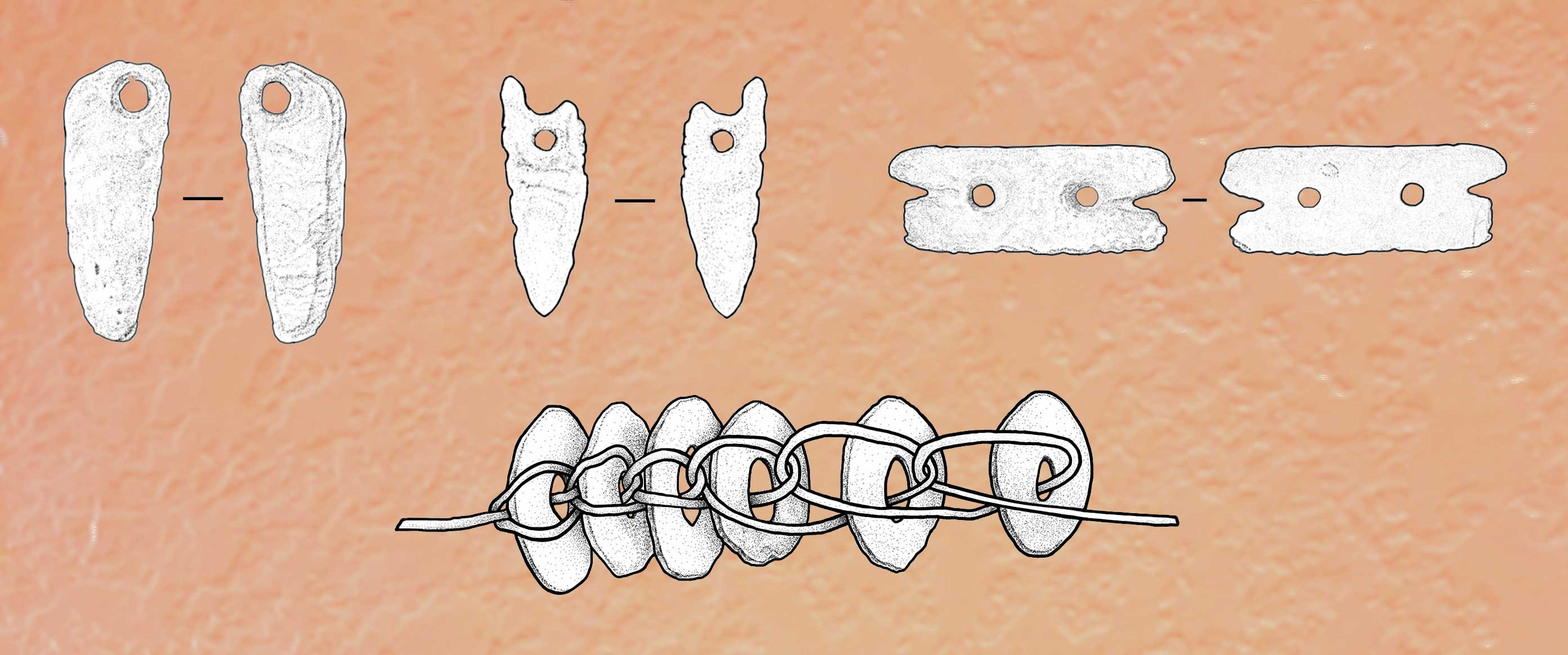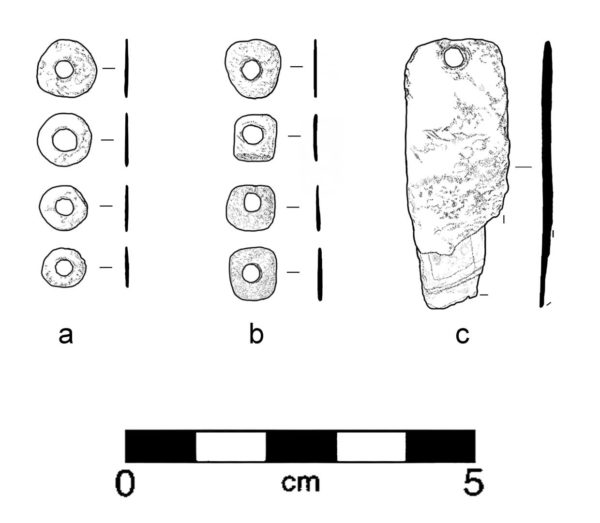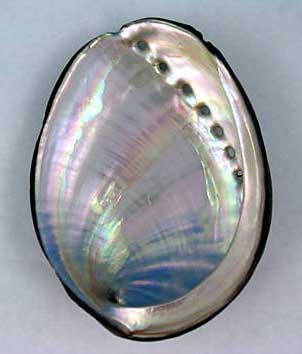
From the Pacific Coast to the Tucson Desert: Cienega Phase Shell Artifacts at the Clearwater Site
Desert Archaeology has conducted numerous excavations at the Early Agricultural period Clearwater site, located west of downtown Tucson at the base of A-Mountain. A team led by Homer Thiel returned in the spring of 2018 to the portion of the site near Avenida del Convento in advance of the new Caterpillar headquarters construction. Desert’s Christine Virden-Lange discusses the ornaments found here that were made from marine shells obtained from the California coast.
Desert Archaeology excavated dozens of features during archaeological investigations at the Avenida del Convento locus of the Clearwater site, including pit structures, roasting pits, thermal pits, and storage pits. Radiocarbon dating showed that burned plant materials found inside some of the pit structures and pits dated to 640-560 BC, which fits nicely within the Early Cienega phase (800-400 BC) of the Early Agricultural Period (2100 BC-50 AD). We also found a cemetery area containing more than 30 mortuary features. Overlying the intact portion of the cemetery was a plow zone (an area impacted by historical agricultural plowing and other mechanical activity), which contained a large quantity of fragmented human bone and many artifacts from disturbed features.
About 183 shell artifacts were recovered from the site, most of them ornaments made from nacreous (iridescent with rainbow hues) shell and especially from shellfish that live today off the coast of southern California. Roughly 165 of these were recovered from the plow zone, including ornaments, beads and pendants that suggest the presence of at least one necklace.
All but a few of the ornaments were manufactured from Haliotis sp or Haliotis cracherodii (abalone or black abalone), which is generally found in the Pacific coastal waters off southern California. At one time, the black abalone was abundant, but today it is endangered due to over-fishing.
This shell species was heavily utilized by the local southern California populations during the pre-contact and historic eras, especially the Chumash people who lived in the Santa Barbara Channel.

The southwestern US and northwestern Mexico; Santa Barbara Channel shown at upper left (map by Catherine Gilman).
Dr. Chester King (Topanga Anthropological Consultants) graciously provided me information about the timing and location of the origin of black abalone ornaments. A thriving shell ornament manufacturing industry began along the southern California coast about 6000 BC. By 3500 BC, people were manufacturing abalone beads and pendants. These ornaments were exchanged and traded to inland populations, eventually making their way across the Great Basin region to the Tucson Basin.
Beads and pendants are small items that are easily carried and could be moved over long distances. How did the people in Tucson obtain these ornaments? It may have been through down-the-line trade, with items passed from village to village, or perhaps through personal contacts with the inhabitants of the desert regions of southern California and the western deserts of southern Arizona.
Bead design changed through time. The earliest style of beads was square or rectangular in plan view, with a large central perforation for stringing. Later, at about 800 BC, round beads with a large central perforation were added to the repertoire. These round beads eventually replaced the square/rectangular beads. Both bead styles were present at the Avenida del Convento locus, suggesting that the site was occupied during the style transition.

Round (left) and rectangular (center) shell beads, and a rectangular shell pendant (right) from the Clearwater site (illustration by Robert Ciaccio).
Beads and ornaments were considered to be important wealth items by many Native American groups since most of them required much time to produce. Some researchers think the shift in bead styles may reflect decreased wealth displays resulting from a development of inherited political positions. Previously, political power was more the result of individual ability to attain and maintain wealth. Over time, the decrease and termination of the use of abalone nacre beads is interpreted as the result of a trend toward a decrease in display with a corresponding increase in stored wealth.
Several pendants that were geometric in form were recovered during excavations at Clearwater, including triangular and rectangular styles. Pendants may have been worn as a single ornament, such as an earring, or may have been strung in a necklace with some of the other beads. None of the ornaments were found in their original positions or arrangements due to disturbance, leaving us unable to determine if they were used in a necklace or bracelet.
One ornament, a gorget or medallion, was especially large and well-made. Manufactured from black abalone, it is a large, round disk with a pair of drilled perforations placed in the center of the ornament. It may have been worn as a pendant, as a hair ornament, or sewn onto clothing. The piece was cut from the central back portion of the shell and retains some of its natural curvature.
From the exterior view, the gorget appears to be a plain disk. However, a series of small nicks was incised along the interior edge as a decorative motif, indicating that this surface was displayed. Because the shift from double perforated ornaments (sewn onto textiles as an appliqué) to single perforated ornaments (suspended) may reflect a decreased emphasis on wealth display, it would seem that whoever the abalone shell gorget belonged to was either highly regarded or was wealthy in terms of shell ornaments.
The amount of shell found in the discrete, undisturbed mortuary features was low, suggesting that the inhabitants of the Clearwater Site had differential access to abalone shell ornaments. From work conducted at other contemporary sites, we know that shell ornaments, especially those made from abalone, were a valuable commodity among the early populations of the Tucson Basin. The people wearing them may have had higher social status or personal wealth, or the items may have been placed in graves as a respectful offering to a deceased family member or friend.




